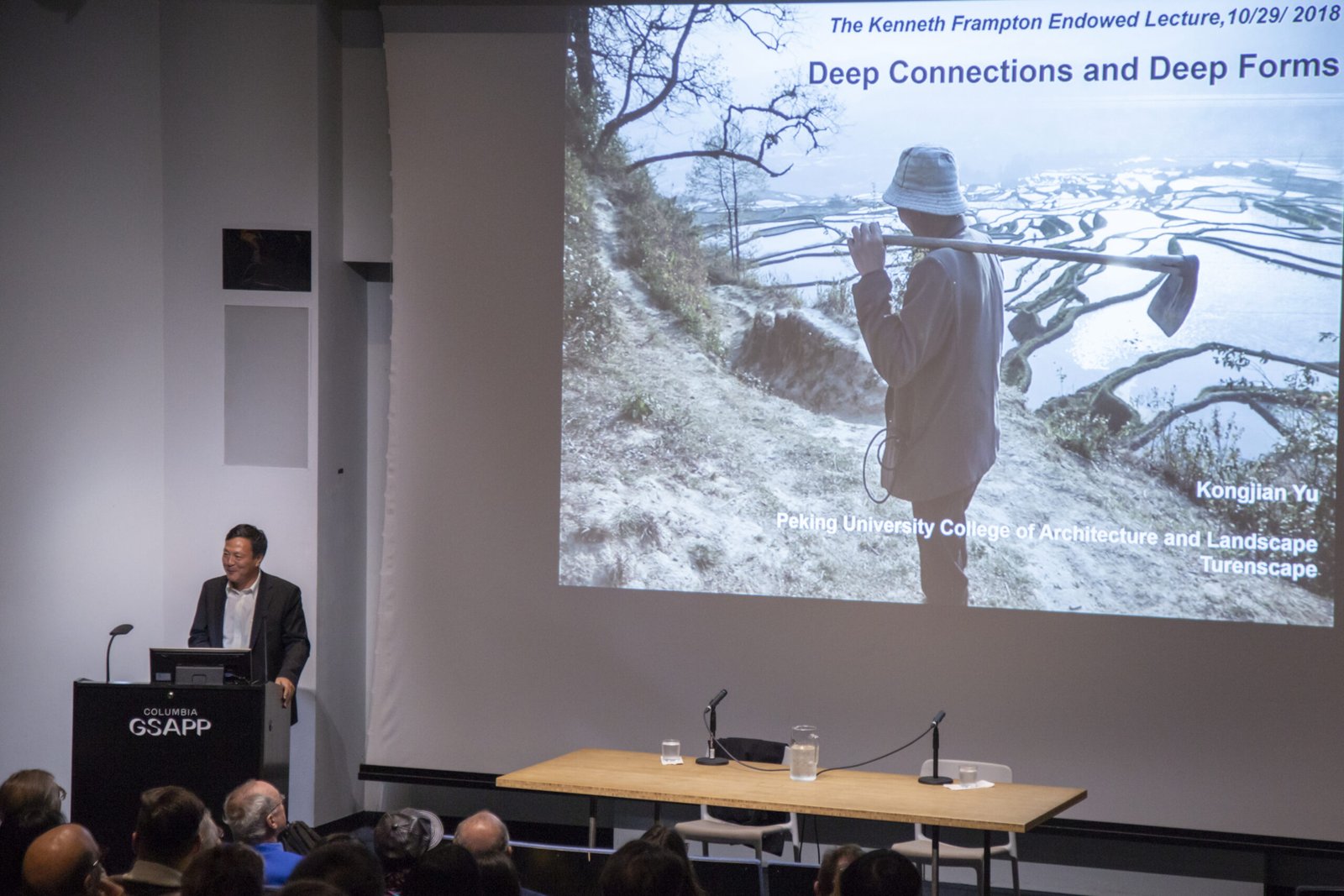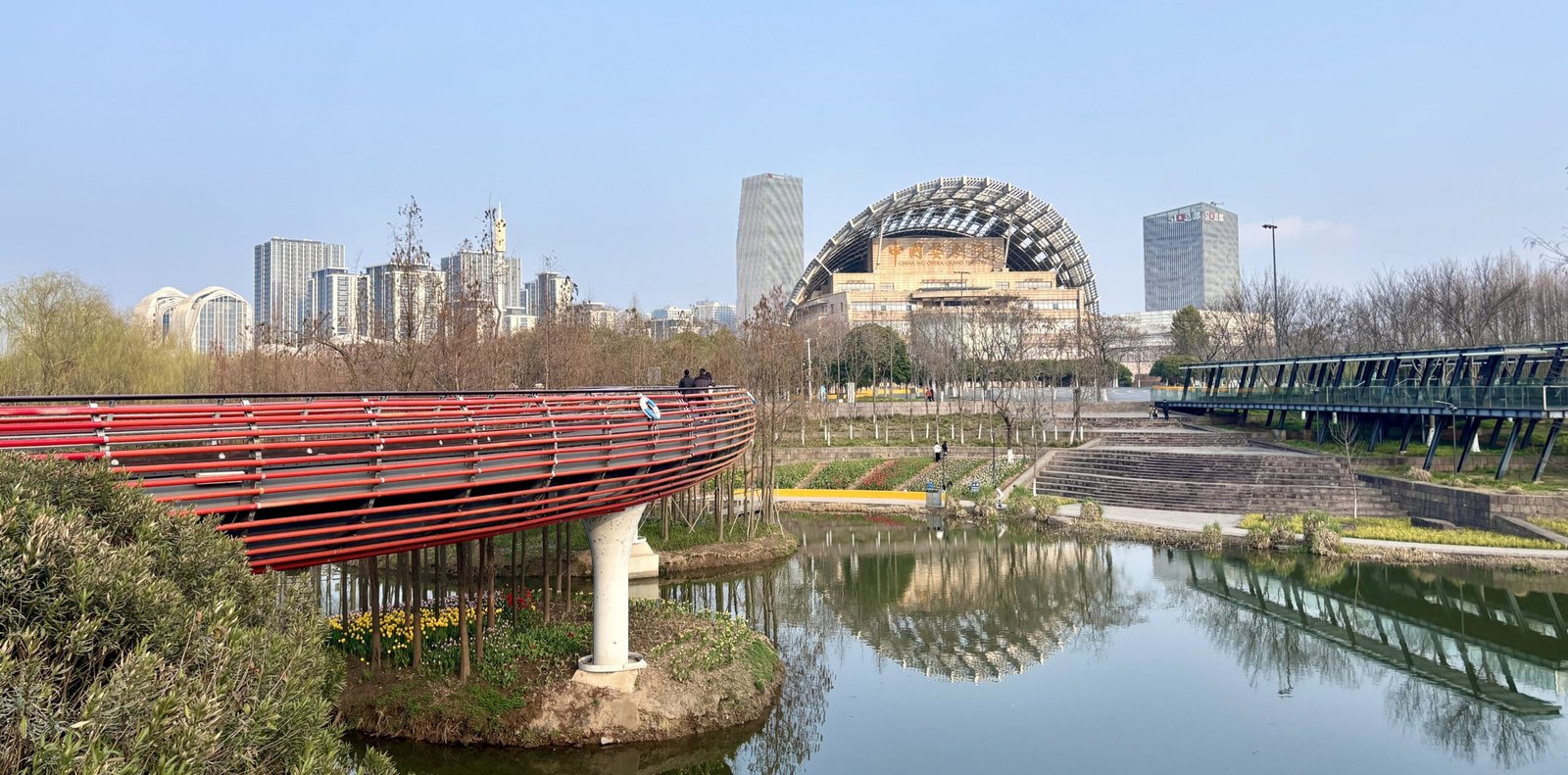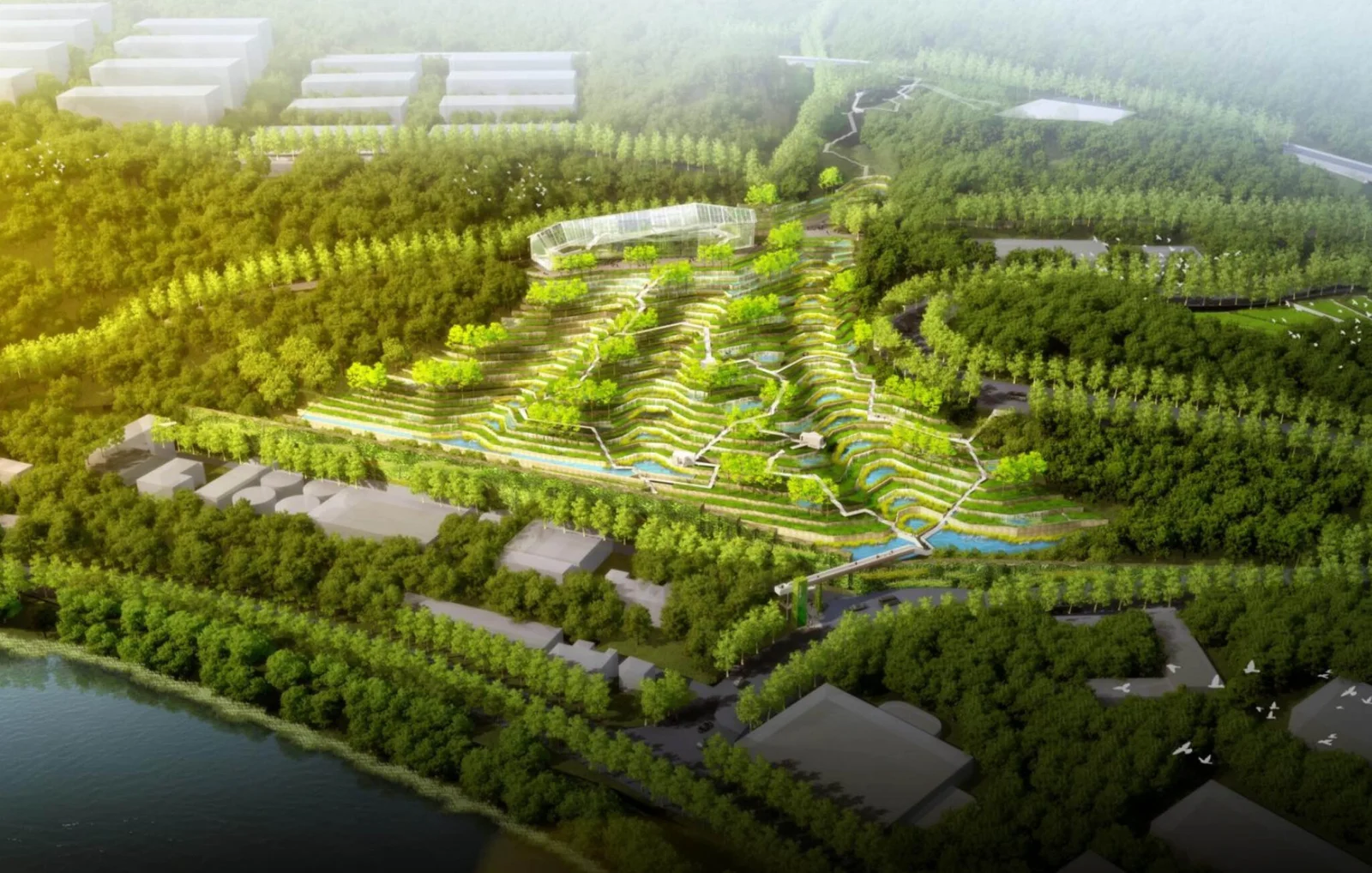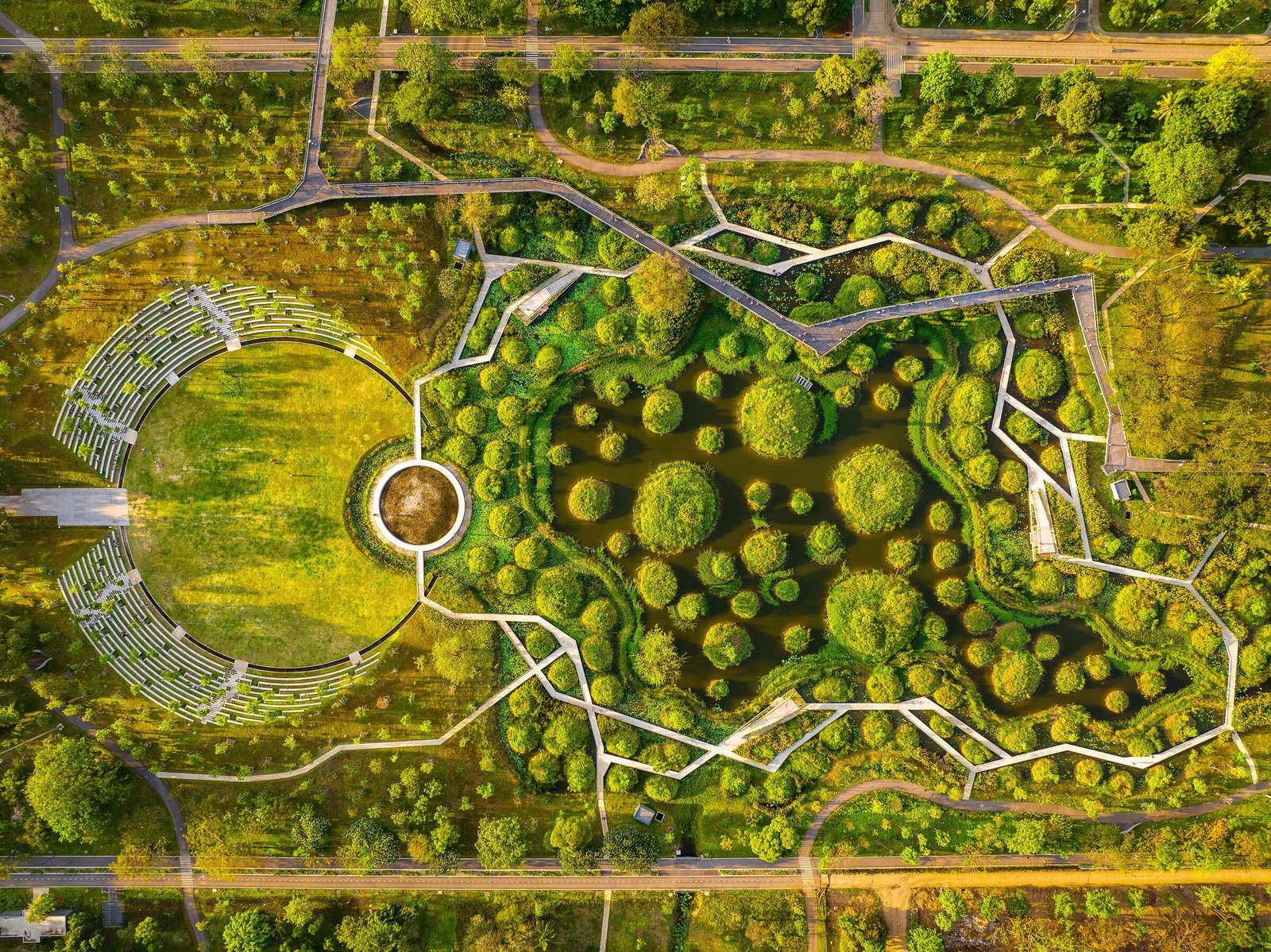Words The Kanto team (Kongjian Yu)
Images Wikimedia Commons and the World Architecture Festival


“Floods are not enemies. We can make friends with water,” Kongjian Yu once said in a World Economic Forum article, a distillation of his approach to nature at rest and in wrath, and the ethos behind his practice, Turenscape. Yu died on September 23, 2025, in a plane crash that also claimed three in Brazil’s Pantanal wetlands, where he had been filming a documentary on one of the world’s great floodplains. He was 62. Born in 1963 to modest means in a farming family in Zhejiang, Yu grew up with nature as teacher and terrain. He studied at Beijing Forestry University, then earned his doctorate at Harvard’s Graduate School of Design before returning to China to establish Turenscape in 1998 and later the College of Architecture and Landscape Architecture at Peking University.


With Turenscape, Yu became known for an urban design and landscape architecture approach that placed nature not in the background but at the center of design. His most influential contribution was the concept of the “sponge city”: a nature-based framework that rejected rigid, concrete flood channels in favor of designed landscapes that absorb, slow, and filter water through wetlands, greenways, ponds, and permeable surfaces, creating a city-wide sponge effect. Instead of keeping nature at bay, Yu urged cities to converse with it. His ideas gained traction, especially in China, where the sponge city concept was adopted nationally by the CCP and the State Council following a series of flooding disasters. Over 30 Chinese cities were selected as pilot sites in the program’s initial phases in 2015 and 2016. A comprehensive account of the Sponge City rollout from Turenscape can be found here.


Implementation of the sponge city concept has been uneven. Some local governments still show a strong preference for traditional grey infrastructure, and in many pilot projects, technical standards or maintenance have been underfunded or loosely applied. Misunderstandings about cost, effectiveness, and feasibility are common, especially when local conditions differ from those assumed in guidelines. In many cases, sponge city measures are limited to small zones or specific sites; without integration into broader citywide flood-management systems, their benefits are muted and unable to prevent flooding during major storms.
Still, the sponge city remains one of the most compelling nature-based responses to urban flooding, requiring minimal built intervention and a regreening of harsh urban centers. For nearly three decades, Yu was among the world’s most influential landscape architects. He received the 2020 Sir Geoffrey Jellicoe Award, the 2023 Cornelia Hahn Oberlander Prize, and the Cooper Hewitt National Design Award. Turenscape was a frequent participant in the World Architecture Festival, where he won the Landscape of the Year award for Benjakitti Forest Park in 2023 and in 2015. His entry Jungle Nilad was announced the winner of the Manila Bay Central Park competition, co-organized by the festival and Buildner for SM Prime, in 2024 for the conglomerate’s contentious reclamation scheme in Manila Bay.


Yu’s death cuts short a career that had already reshaped the global conversation on how cities confront climate change—at a time when extreme weather and flooding have become not the exception but the norm. His legacy is urgently relevant to places like the Philippines, where corruption and short-termism often sink flood control projects into concrete contracts with little effect (or, as recent events show, no effect at all; some examples don’t even seem to exist). Yu’s Turenscape demonstrated how cities could grow and adapt with nature, shedding monolithic, hard-edged, fixed-in-place features for ones that breathe, evolve, and respond like an ecosystem.
We join the design world in mourning a visionary who saw possibilities where others saw constraints, one who taught cities how to breathe again and make peace with water. •


Sources
Associated Press. (2025, September 24). Chinese landscape architect Kongjian Yu dies in Brazil plane crash. AP News. https://apnews.com/article/kongjian-yu-plane-crash-brazil-2025
Chan, F. K. S., Griffiths, J. A., Higgitt, D., Xu, S., Zhu, F., Tang, Y.-T., Xu, Y., & Thorne, C. R. (2018). Sponge City Programme in China: A review of implementation, challenges and opportunities. Water, 10(9), 1230. https://doi.org/10.3390/w10091230
Comments and recommendations on Sponge City: China’s solutions to prevent flooding risks. (2022). PubMed. https://pubmed.ncbi.nlm.nih.gov/36685432/
Cooper Hewitt, Smithsonian Design Museum. (n.d.). National Design Awards: Kongjian Yu. https://www.cooperhewitt.org
Harvard Graduate School of Design. (n.d.). Alumni profiles: Kongjian Yu. https://www.gsd.harvard.edu
International Federation of Landscape Architects. (2020). Sir Geoffrey Jellicoe Award recipients. https://www.iflaonline.org
Li, H., Ding, L., Ren, M., Li, C., & Wang, H. (2017). Sponge city construction in China: A survey of the challenges and opportunities. Sustainability, 9(2), 232. https://doi.org/10.3390/su9020232
Li, J., Mu, C., Deng, C., & Ma, M. (2020). Hydrologic-environmental effects of sponge city under different spatial scales. Journal of Water Reuse and Desalination, 10(1), 45–56. https://doi.org/10.2166/wrd.2019.046
Ministry of Housing and Urban-Rural Development of the People’s Republic of China. (2015–2016). Sponge City Pilot Program Reports.
The Cultural Landscape Foundation. (2023). Cornelia Hahn Oberlander Prize laureates. https://www.tclf.org
Turenscape. (n.d.). About Kongjian Yu. http://www.turenscape.com
Wikipedia contributors. (2025, September). Kongjian Yu. In Wikipedia. https://en.wikipedia.org/wiki/Kongjian_Yu
Wikipedia contributors. (2025, September). Sponge city. In Wikipedia. https://en.wikipedia.org/wiki/Sponge_city
World Architecture Festival. (2023). Landscape of the Year: Benjakitti Forest Park. https://www.worldarchitecturefestival.com
World Architecture Festival. (2024). Manila Bay Central Park competition. https://www.worldarchitecturefestival.com
World Economic Forum. (2022, November). Kongjian Yu: How to make friends with water. https://www.weforum.org/agenda/2022/11/kongjian-yu-how-to-make-friends-with-water
Yu, K. (2015). The sponge city: An urban water management strategy for the 21st century. Frontiers of Environmental Science & Engineering, 9(3), 457–464. https://doi.org/10.1007/s11783-015-0751-7

